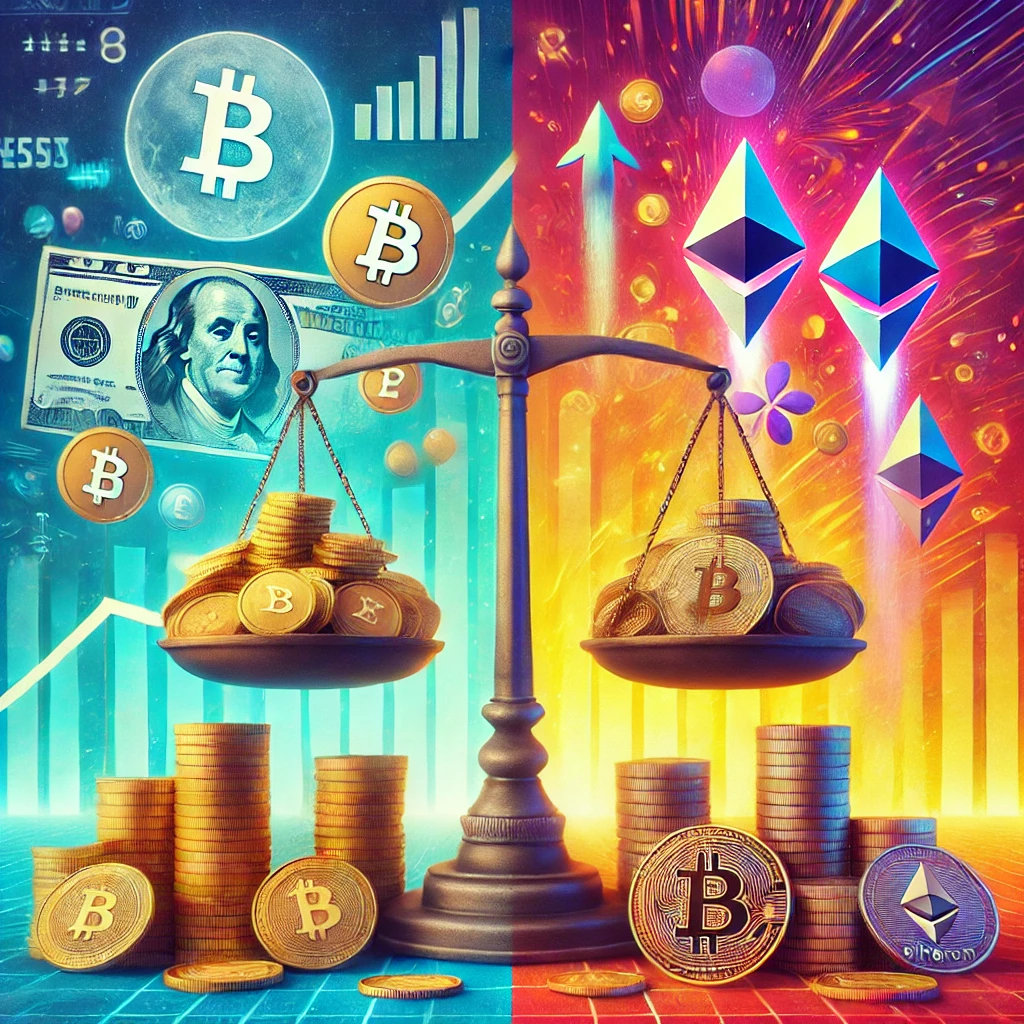Cryptocurrency has evolved significantly since the creation of Bitcoin. Today, investors have a wide variety of options. These options are usually either in altcoins or stablecoins. Each category has specific strengths and weaknesses. Therefore, your choice is usually based on the features you would love to see or use with your coins.
This guide explores the salient features of each option and what to look at when selecting either option. We hope this will help determine where to put your funds.
What are Altcoins?
The name altcoin was derived from two words ‘alternative coins’. These are coins that were created as alternatives to Bitcoin. Altcoins include common cryptocurrencies like Solana, Ethereum, Cardano, and Litecoin. They try to solve issues that users face with Bitcoin, including scalability, transaction speeds, support for decentralized applications, and the cost of transfer.
Since they are alternatives to Bitcoin, they have a similar structure to Bitcoin. They also follow Bitcoin in the marketplace where its fluctuation in price also affects their values.
What are the qualities of Altcoins?
- They Have Potential for High Returns: Altcoins experience huge price increases in a short period, which makes them attractive options for short- and medium-term investments. Many investors who take up altcoins early in their upward trajectory rake in substantial profits from their efforts. For example, Ethereum started as a little-known cryptocurrency a while ago. Today, it is the second-largest coin by market capitalization. You will find it on almost all crypto-accepting websites, including in gaming, e-commerce, and crypto trading. For gamers looking for crypto betting opportunities, Crypto-Bookies.com has a list of Ethereum sports betting sites where you can try your luck.
- Diverse Use Cases: As explained earlier, Altcoins were created to solve specific shortcomings in Bitcoin. They have innovative solutions such as support for smart contracts, decentralized applications, and cross-chain cash transfers. This has paved the way for such applications as NFTs, DeFi, and a wide number of others. Other coins, like Solana, have enhanced transaction speeds at a fraction of what you would pay to transact with Bitcoin. These innovations have helped increase the adoption rates for these coins.
- Option for Spreading Risks: Since many altcoins serve different needs, it is usually possible to spread risks by investing in several of them. Investors can spread their funds across sectors like cloud computing, gaming, and finance. A few altcoins that allow cross-chain transactions or can be held in the same wallets as others make it easier to hold many different types of coins in one wallet.
What Weaknesses Do Altcoins Have?
- High Volatility: Just as the prices go up in a short time, so do the fall. This makes them riskier than stablecoins as you make significant losses within a short time.
- Regulation Risks: Different regulations oversee the use of altcoins in the marketplace. Many coins are also classified as securities, which subjects them to greater and stricter regulations. This regulation and scrutiny may affect the price growth and ability to create innovations around these coins.
- Market Saturation: There is a huge number of coins in the market today. Unfortunately, most of the projects are still unproven. If you are unlucky to invest in such projects, there is a risk that you will be left with coins with low or no value. The market saturation also makes it hard for investors to determine which coins have the highest market potential.
What are Stablecoins?
Stablecoins, just as the name suggests, are digital currencies designed to deal with price volatility. This stability is achieved by being pegged to traditional assets; like fiat currencies and commodities like go. The peg keeps the stablecoins’ value near or at par with the said assets, which makes them less prone to wild price swings experienced by altcoins.
Some common fiat money-based stablecoins include USDT and USDC, which are backed by reserves of corresponding USD currency. This means for each token in circulation, there is a real dollar in the bank to support it. Other coins like DAI are backed by cryptocurrencies. The owners over-collateralize the coins to counter the volatility from the backing coins.
The apparent stability of stablecoins makes them good stores of value and ideal for day-to-day transactions as the medium of exchange. Here are some qualities of stablecoins.
Price Stability
Price stability is the greatest advantage of stablecoins in the marketplace. They remain steady, making them ideal for daily transactions like fiat money. These coins can also store value without having to convert the funds into fiat money.
High Liquidity
Stablecoins are the most liquid assets in the crypto marketplace. You can quickly sell them in fiat money without losing their value. This makes them similar to having hard cash in your pocket. Besides, since many outlets now accept stablecoins, you can just use them off your wallet like hard cash.
Staking Opportunities
Many of the stablecoins have opportunities for users to stake them for returns. This opens new opportunities to make cash with low risk. However, note that the availability of this option varies from one stablecoin to the other.
Cons of Stable coins
- Limited Price Growth: Stablecoins do not experience significant price appreciation. This makes them less attractive to anyone looking to grow their investment.
- Dependence on Other Assets: If anything happens to the assets that back them, stablecoins will also see a fluctuation in prices. This makes them susceptible to changes in the money market and decisions made by central banks around the globe.
Which is the Best Choice?
Your choice for either type of coin depends on what you need to achieve with the coins. For stability and safety, go for stablecoins. However, for growth potential, invest in altcoins. Also research the specific coin you wish to invest in to know its market capitalization, stability, and any regulatory issues it may be facing.
